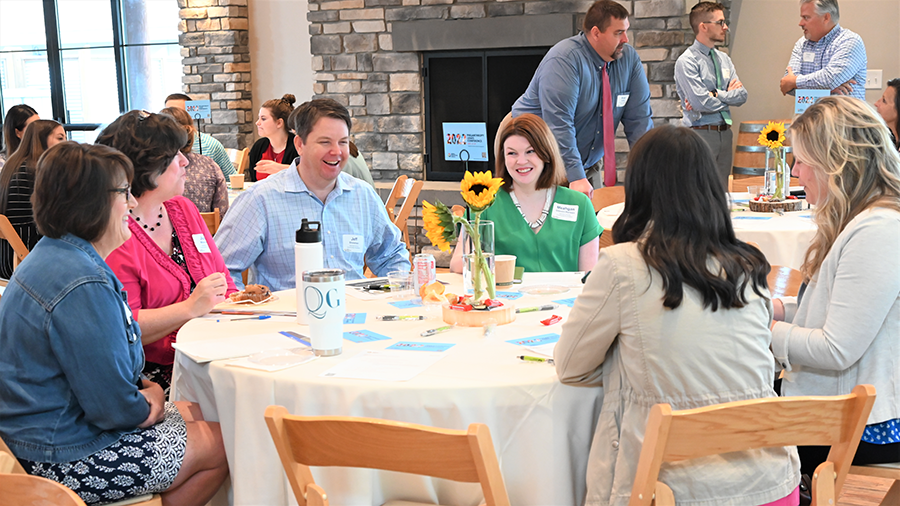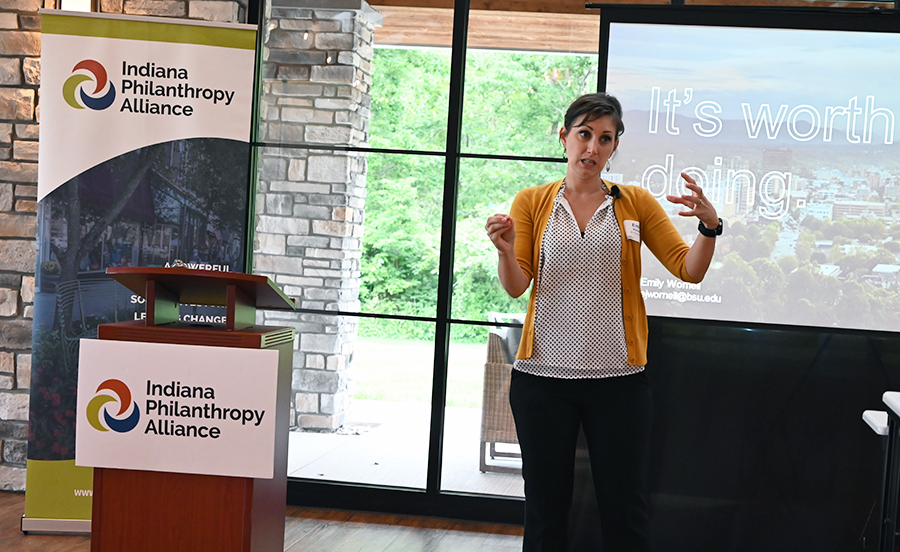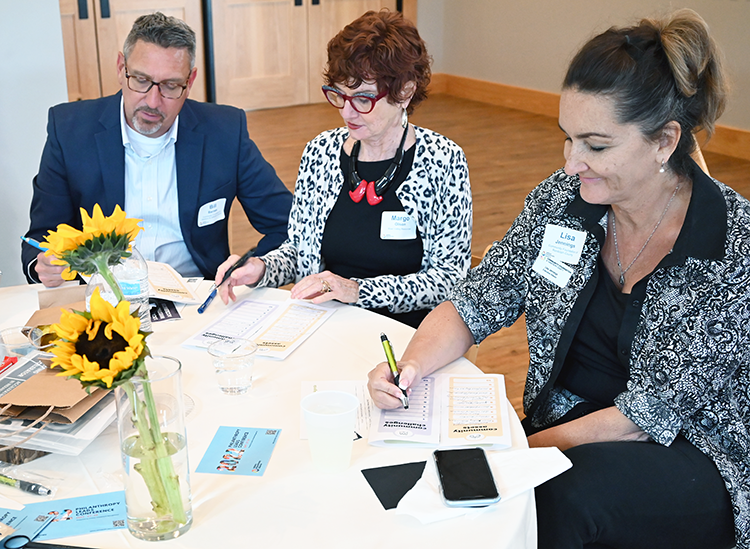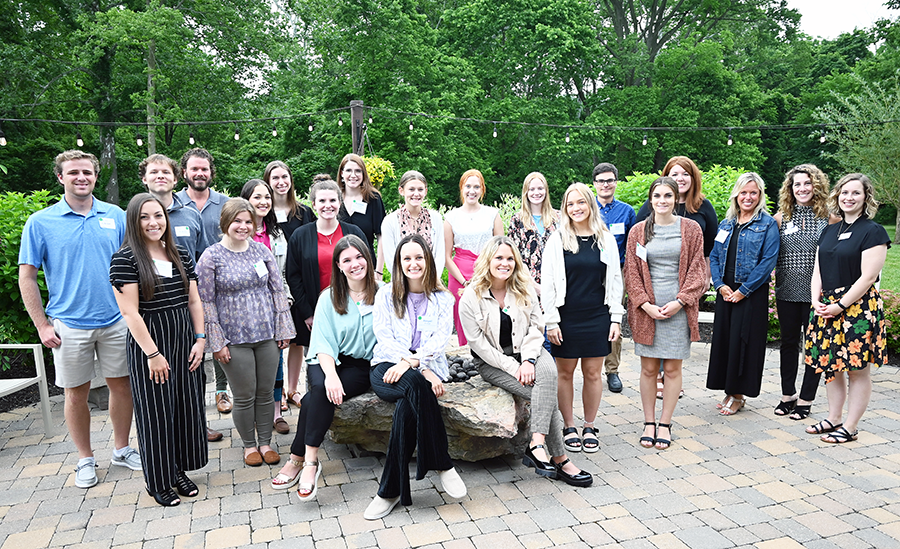Rural Quality of Life a Sustainable Path to Economic Development

The June 7 IPA Rural Prosperity Symposium left attendees with many important takeaways. The most significant, perhaps, was that the quality of life in rural areas is itself a selling point, not something to shy away from.
To demonstrate, Dr. Emily Wornell, the event’s keynote speaker, asked the crowd to think of the traits they look for in a great town. The responses—peace and quiet, natural beauty, small schools, tight social networks—were attributes indicative of many rural towns.
Wornell, a research assistant professor at Ball State University's Indiana Communities Institute, grew up in rural Oregon and dedicates her research to those important parts of America. The current thinking in traditional economic development, fixated on money and job creation, is flawed, she says.Rather, she believes quality of life is economic development, a point Wornell and her co-authors made in greater detail in a January 2022 article for the Brookings Institute:
But now there is compelling new data that these traditional economic development tools may be ineffective compared to investments in quality of life and place. Our research on smaller communities has found that community amenities such as recreation opportunities, cultural activities, and excellent services (e.g., good schools, transportation options) are likely bigger contributors to healthy local economics than traditional ‘business-friendly’ measures.
Wornell proposed an alternative approach, which she calls the Comprehensive Community Wealth Approach. This framework looks at eight different kinds of capital that make for good communities: built capital, natural capital, intellectual capital, human capital, financial capital, social capital, political capital, and cultural capital.
By developing these different areas instead of focusing on one [financial], you create a better quality of life in your community. While this approach doesn’t have the cookie-cutter simplicity of traditional economic development—think “tax incentives” ad nauseam—it is ultimately the more worthwhile and effective course.
In the same article mentioned above, Wornell and her co-authors framed it this way:
Leaders in the small Midwest places looking for levers for economic development can be guided by the same wisdom that businesspeople have always known: it is much easier to attract new customers when you make your current customers happy. Improving quality of life for current residents in small Midwest towns can be a driving force for the community renewal they so eagerly seek.
To that end, communities should get creative in connecting its needs with quality-of-life attractors rather than leaning on outdated economic development concepts.
Wornell didn’t just present a Pollyannaish view of rural communities, however. The real issue for rural areas, though, is structural; funding is one example. Wornell specifically called out community development block grants: while many urban areas receive them as an entitlement, rural locales must apply in a process that is very competitive.Even if they receive it, matching funds may be required. For cash-strapped municipalities, that may not be something it can afford. “This exacerbates the inequality,” Wornell said. “The systems are structured to make it more difficult to thrive. It puts the onus back on rural communities that are doing their best.”
Wornell also moderated a discussion with Bill Barnes, CEO of the Community Foundation of Madison and Jefferson County, and Margo Olson, executive director of River Valley Resources. Each took one part of the framework—Barnes emphasizing cultural capital by creating a more robust arts sector; Olson boosting human capital through its Clearinghouse Project and Rural Works! program—to successfully highlight their communities. One important issue noted by both: the importance of community perception on what these programs were trying to accomplish and getting its buy-in.
The future of the philanthropic sector was also present, as several community foundation interns attended and had a breakout session of their own where they were able to hear former interns who work in the field. Asked later, many felt they were giving greater consideration to a career in philanthropy. “The orientation and today’s event opened my eyes to all the opportunities foundations hold,” one said.
The busy day at The Sycamore at Mallow Run in Bargersville concluded with a robust group activity led by Meg Liffick and Katelyn Redelman of SmallBox, a design thinking firm in Indianapolis. Utilizing the eight community assets mentioned early by Wornell, each group used the Community Worksheet provided identify the strengths and challenges in their respective locales, as well as opportunities and actions for change. The goal: to build-upon and leverage those unique assets to solve community issues and create sustained prosperity.
Several attendees expressed how useful they found the exercise and worksheet and indicated they would use them with their boards and community at-large. “I can see it being a catalyst for discussion at some ongoing meetings,” one said.
When it comes to rural prosperity, Wornell emphasized that solutions are place-based and there is no one-size-fits-all approach. She urged small Indiana towns to think out-of-the-box when it comes to their amenities and to prioritize quality of life and happiness for residents.
Community Foundation Interns



